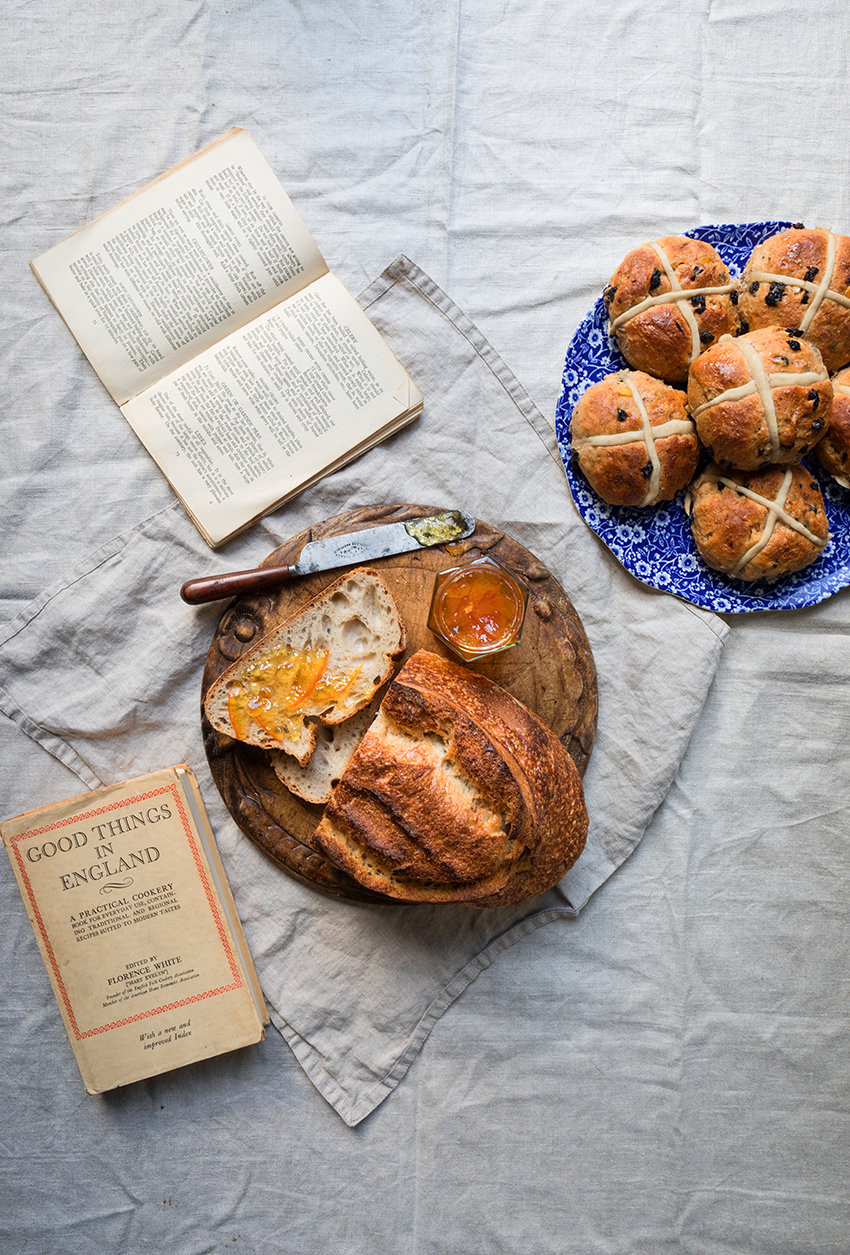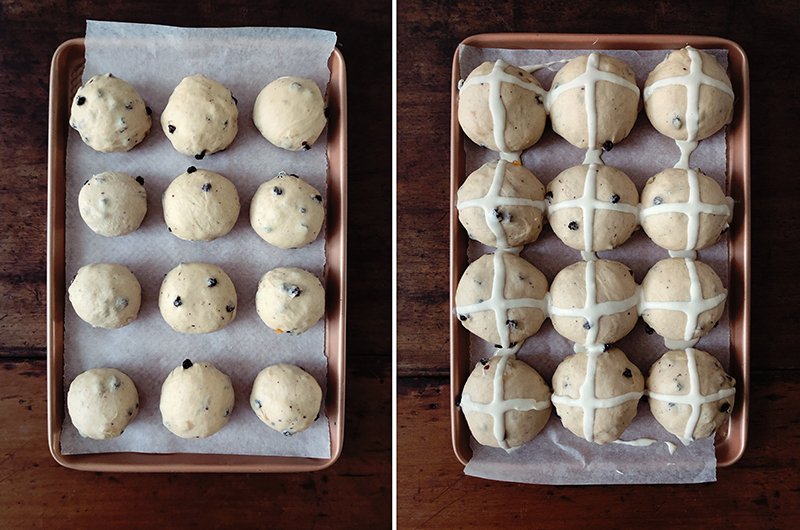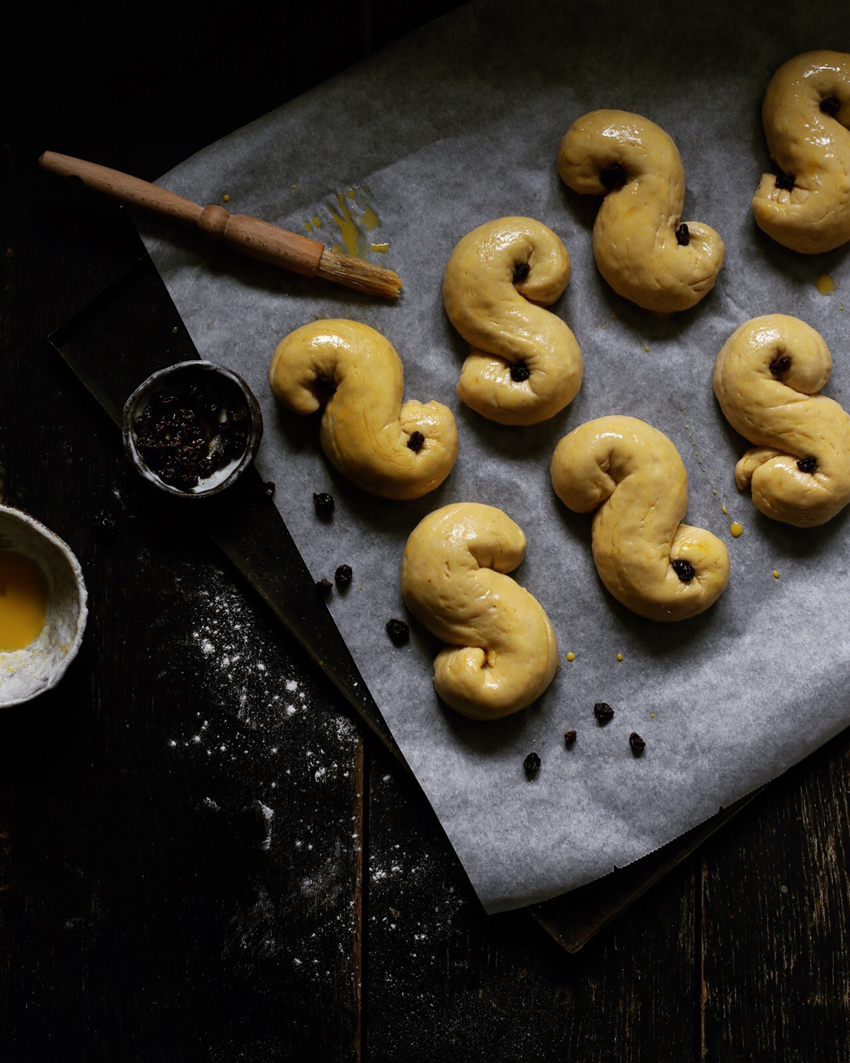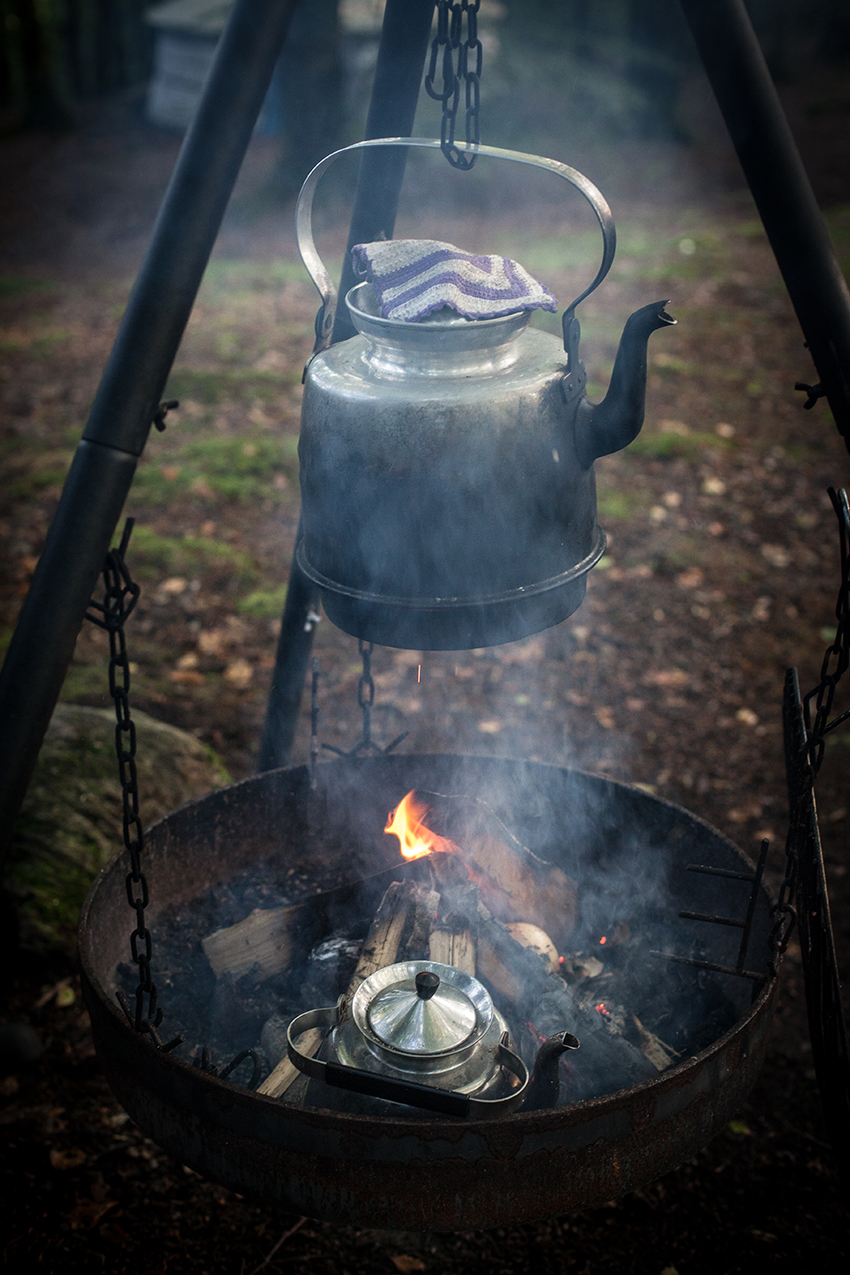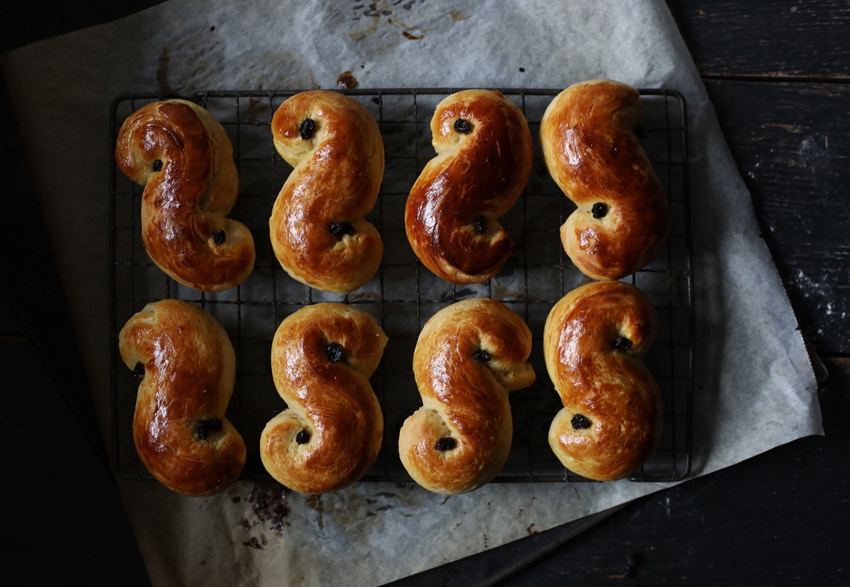The post When it comes to Mincemeat, you have to plan ahead appeared first on Miss Foodwise.
]]>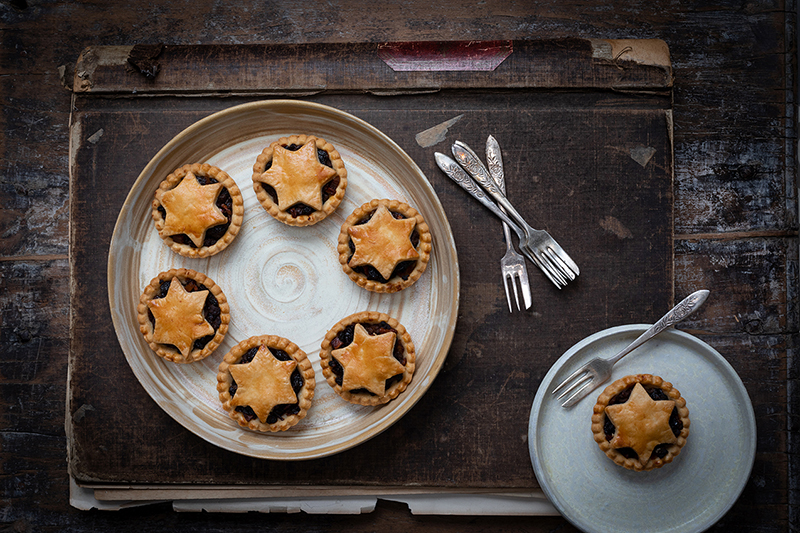
Mincemeat is an ancient recipe that gives you a taste of Medieval times gone by when the usage of this mixture was widely common for sweet as well as savoury dishes. That is if you were well off, dishes with these rich ingredients were the privilege of the very rich and one of the first recipes dates from the 14th century scroll presumably written by the chef of King Richard II.
Mincemeat is best made at least a month in advance so that the flavours can mature. You can use it for different recipes: as a filling for Mince pies of course but also for Eccles cakes and a couple of other British bakes.
The combination of fruits and spices for mincemeat is often diverse, but raisins, currants and candied lemon, cedro and/or orange peel are standard. Some old recipes also contain prunes, dates, figs or candied ginger. Spices are usually cinnamon, cloves, mace and nutmeg. There is always grated apple or pear and sometimes also lemon or orange juice – mostly from Seville oranges (these are very acidic and also the basis for English marmalade – see recipe here).
You can make the mincemeat in this large quantity and store it in the fridge for up to 6 months in sterilised preserving jars.
And then for a little joyeus news: my new book ‘Brits Bakboek‘ has been nominated for ‘Het Gouden Kookboek’ a prestigious kookbook award in the Netherlands. I’m absolutely chuffed and honoured to be nominated as the only Belgian on the list!
Check back around Christmas for my Mince pies recipe (or check my book ‘Brits Bakboek’)
For the mincemeat – makes 880 g/1 lb 15 oz
- 175 g (6 oz) currants
- 175 g (6 oz) large dark raisins
- 175 g (6 oz) stewing apple, coarsely grated
- 50 g (1¾ oz) candied orange peel
- 50 g (1¾ oz) prunes, pitted and chopped
- 115 g (4 oz) shredded suet or butter, frozen and grated
- 115 g (4 oz) soft brown sugar
- ½ tsp ground cinnamon
- ½ tsp ground mace
- ½ tsp ground cloves
- ¼ tsp ground nutmeg
- ¼ tsp ground ginger
- pinch of sea salt
- ½ lemon or Seville orange, juice and zest
- 250 ml (9 fl oz) brandy or rum (or half sherry, half rum)
Put all the ingredients for the mincemeat in a bowl and add the brandy or rum to cover the fruit. Stir well, then let it rest overnight. The next day, stir again and then divide among sterilised preserving jars.
The post When it comes to Mincemeat, you have to plan ahead appeared first on Miss Foodwise.
]]>The post Hot Cross Buns – The Tale Of English Buns # 2 appeared first on Miss Foodwise.
]]>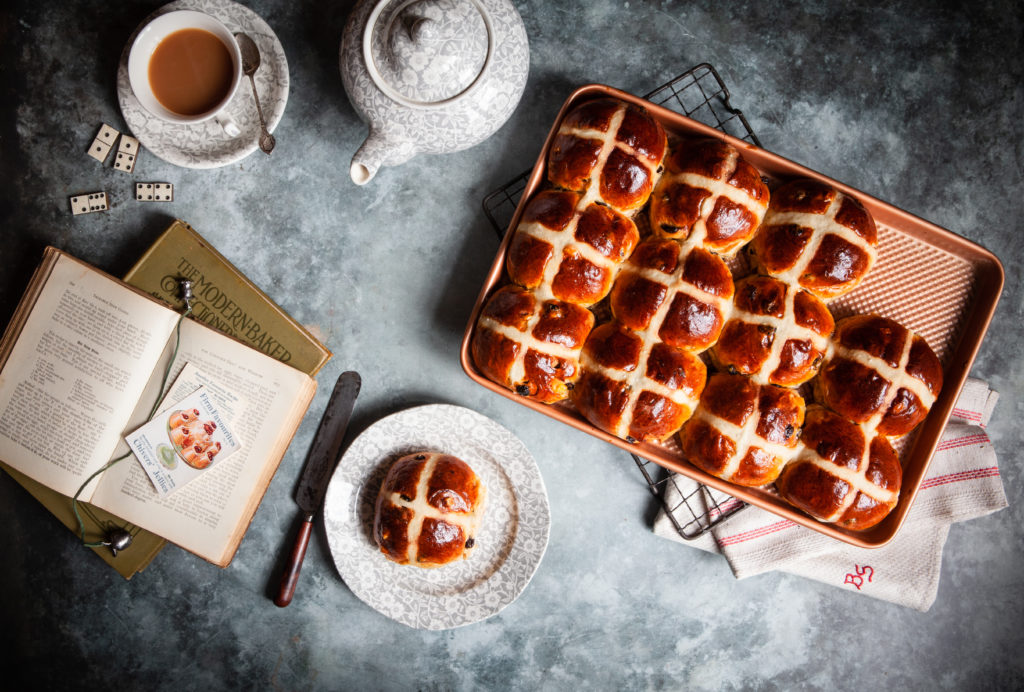 Bake them on Good Friday: The history and tales behind these spiced buns are plenty and intriguing, steeped in folklore dating back as far as Anglo-Saxon Britain. This is perhaps one of the most iconic of buns. Recipe from my new book Oats in the North, Wheat from the South, out with Murdoch Books (2020)
Bake them on Good Friday: The history and tales behind these spiced buns are plenty and intriguing, steeped in folklore dating back as far as Anglo-Saxon Britain. This is perhaps one of the most iconic of buns. Recipe from my new book Oats in the North, Wheat from the South, out with Murdoch Books (2020)
Every year well before Easter Marks & Spencer starts piling up Hot Cross Buns from chocolate & salted caramel to blueberry and marmalade. Marmalade I can understand as you do add candied orange peel to the dough, but chocolate & salted caramel and blueberry just creates a whole different bun, the cross being the only reminder of a traditional Hot Cross Bun. But what is traditional or original with a recipe as old as this one? If you scroll down to the recipe you might discover I too dare to add something which isn’t traditional from time to time.
The tradition of baking bread marked with a cross is linked to paganism as well as Christianity. The pagan Saxons would bake cross buns at the beginning of spring in honour of the goddess Eostre – most likely being the origin of the name Easter. The cross represented the rebirth of the world after winter and the four quarters of the moon, as well as the four seasons and the wheel of life.
The Christians saw the Crucifixion in the cross bun and, as with many other pre-Christian traditions, replaced their pagan meaning with a Christian one – the resurrection of Christ at Easter.
According to Elizabeth David, it wasn’t until Tudor times that it was permanently linked to Christian celebrations. During the reign of Elizabeth I, the London Clerk of Markets issued a decree forbidding the sale of spiced buns except at burials, at Christmas or on Good Friday.
The first recorded reference to ‘hot’ cross buns was in ‘Poor Robin’s Almanac’ in the early 1700s.
‘Good Friday come this month, the old woman runs. With one or two a penny hot cross buns.’
This satirical rhyme was also probably the inspiration of the commonly known street vendors cry:
‘Hot cross buns, hot cross buns!
One ha’penny, two ha’penny, hot cross buns!
If you have no daughters, give them to your sons,
One ha’penny, two ha’penny, hot cross buns!’
A century later the belief behind the hot cross bun starts to get a superstitious rather than a religious meaning.
In London’s East End you can find a pub called The Widows Son, named after a widow who lived in a cottage at the site in the 1820s. The widow baked hot cross buns for her sailor son who was supposed to come home from the sea on Good Friday. He must have died at sea as he never returned home, but the widow refused to give up hope for his return and continued to bake a hot cross bun for him every year, hanging it in her kitchen with the buns from previous years.
When the widow died, the buns were found hanging from a beam in the cottage and the story has been kept alive by the pub landlords ever since a pub was built on the site in 1848.
For whatever reason or belief you choose to bake a batch of hot cross buns on this Good Friday, it will most likely be to enjoy them with your loved ones. May it be for Eostre, Easter, the beginning of a much awaited spring or as a superstitious amulet for when you set sail, bake them with love!
This recipe is a revised version from one that appeared years ago on this site. I advise to use this one.
So here is how you bake your own:
Hot Cross Buns
What you will need
15 g (½ oz) dried yeast
300 ml (10½ fl oz) lukewarm full-fat milk
500 g (1 lb 2 oz) strong white bread flour
60 g (2¼ oz) raw (demerara) sugar or white sugar
1 tsp ground cinnamon
½ tsp ground mace
¼ tsp ground nutmeg
1/8 tsp allspice
1/8 tsp ground ginger
1/8 tsp ground coriander
70 g (2½ oz) butter, at room temperature, cubed
1 egg
5 g (1/8 oz) fine sea salt
150 g (5½ oz) currants
50 g (1¾ oz) candied citrus peel
2 egg yolks + 2 tbsp milk, for egg wash
For the crosses
140-160 ml (5¼ fl oz) water (if your flour is old it needs more water, if fresh 140 will be enough)
75 g (2½ oz) plain (all-purpose) flour
For a 39 x 27 cm (15½ x 10¾ inch) baking tin (if you don’t want the buns to attach to one another while baking, use a larger tray or bake in two batches)
For the shiny glaze:
Melt 60 g plain white sugar in 5 tbsp water
Method:
Add the yeast to the lukewarm milk and stir briefly and gently to activate it. The yeast will start to foam up in clusters, which means it is ready for use. Combine the flour, sugar and spices in a large bowl or the bowl of an electric mixer fitted with a dough hook and put the butter on top. Pour half of the yeast mixture over the butter and start kneading. When the milk and butter are completely absorbed, add the rest of the yeast mixture, along with the egg. Knead for 5 minutes, then let the dough stand for a few minutes (at this point it will be very wet). Add the salt and then the currants and candied peel and knead for 10 minutes, scraping the dough off the dough hook and side of the bowl if needed, until the dough has come together in a smooth and elastic dough that is not too dry but also not terribly wet.
Cover the dough and set aside for 1 hour until it has doubled in quantity.
Meanwhile, line the baking tin with baking paper. Mix the water and flour into a thick batter for the crosses and scoop it into a piping bag with a small nozzle and cover until needed.
Divide the dough into 12 equal pieces. Take a piece of dough and lightly flatten it on your work surface, then pull the outer parts in like a purse and gently squeeze together like a dumpling so that the dough can no longer split open while rising.
Turn the dough over so the squeezed ends are on the bottom. It should be nice and smooth on top – if not, flatten it and start again. Place in the baking tin and continue shaping the other buns, adding them to the tin to form neat rows.
Cover the tray of buns with a light cotton cloth and wrap it in a large plastic bag (I keep one especially for this purpose). Rest the dough for 1 hour or until the buns have doubled in size. Towards the end of the resting time, preheat the oven to 210°C (410°F).
Brush the buns generously with the egg wash, then carefully pipe a cross onto each bun. Transfer to the oven and bake for about 20-30 minutes until golden brown. (if you don’t want to egg wash, just brush on the sugar syrup as mentioned in the recipe, or do both!)
The buns are best eaten on the day they’re made. The next day they can be revived in a hot oven for a few minutes. You can also freeze the baked buns, thaw and then pop them in a hot oven for a few minutes.
These buns are excellent halved, then toasted and spread with copious amounts of farmhouse butter.
Freeze for up to a month. Leftover buns make a perfect Hot Cross Bun and Butter pudding, see my recipe here >
*Letting the dough rest for a while without salt is called an “autolyse”. It allows for enzymes to do part of the gluten development before you start to actually knead it. Adding salt with the yeast can kill it or slow down the process. This way it forms a developed dough more quickly.
RECIPE FROM MY BOOK Oats in the North, Wheat from the South (The British Baking Book (US), Brits Bakboek (NL-BE)) – You can order a copy here >
You might also enjoy (more buns of course):
For Bath Buns go here >
For Cinnamon buns go here >
For Santa Lucia Buns go here
The post Hot Cross Buns – The Tale Of English Buns # 2 appeared first on Miss Foodwise.
]]>The post Swedish Saint Lucia Buns on the darkest day of the year appeared first on Miss Foodwise.
]]>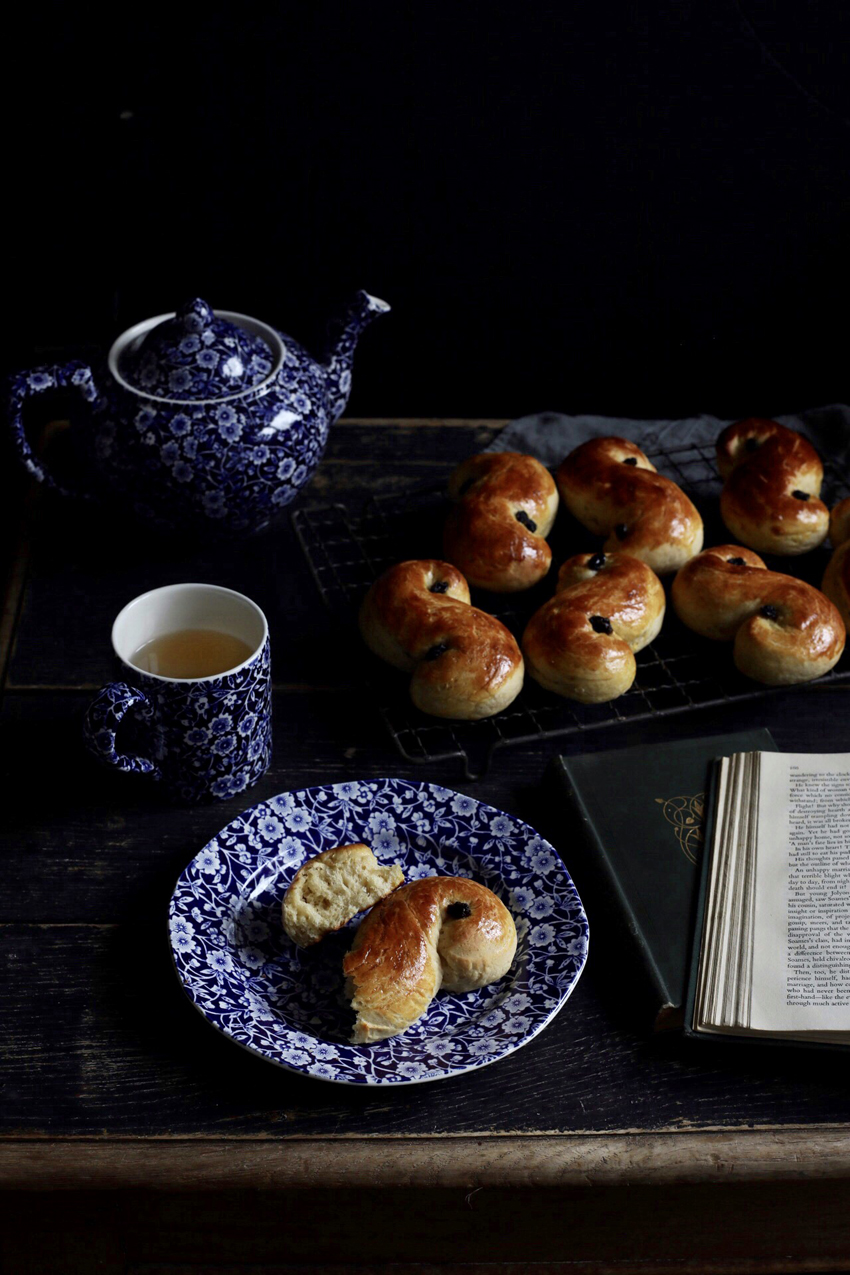 First of all good news! My book Belgian Café Culture (Authentieke Belgische Cafés) has won the ‘Food History’ Award for Belgium at the Gourmand World Book Awards! I’m extremely happy that our Belgian café heritage is getting such recognition, in the hope that this will lead to some day preserving cafés as protected heritage. Now on to todays business…
First of all good news! My book Belgian Café Culture (Authentieke Belgische Cafés) has won the ‘Food History’ Award for Belgium at the Gourmand World Book Awards! I’m extremely happy that our Belgian café heritage is getting such recognition, in the hope that this will lead to some day preserving cafés as protected heritage. Now on to todays business…
Ever since I spent some time in Sweden I can not stop baking traditional Swedish delights! So of course I had to bake on Santa Lucia, which is celebrated in Sweden today. They go by a few names: Lussebullar, Lussekatt, Lussekatter, St.Lucia bullar and plain old saffron buns.
According to tradition it is the eldest daughter of the family who is in charge of baking these buns. Santa Lucia is the christianised pagan feast of the winter solstice. Today is the darkest day of the year and therefore light has to be celebrated and cherished. Before christianisation the Nordic people would celebrate the goddess Frigga or Freya and her awakening from the tree in which she was hiding with her child Baldur. This marks the shortest day and the moment in which the days will start to lengthen again. For pagans today is christmas.
Santa Lucia or Sankta Lucia is a feast of light and celebrated with candles because Lucia wore a candle-lit wreath to guide her through the catacombs to bring food to christians who were in hiding from persecution. Lucia is represented as a lady in a virgin white dress with a red sash symbolising the blood of her martyrdom. In Norway and Sweden girls are dressed like this and one of them wears a wreath crown of candles on her head. The girls parade around the town or village hall with these delicious saffron buns and other delights which symbolises Lucia bringing the light and love of christianity. There is song singing and the whole community comes together.
These buns are easy to make, easy to freeze and have become a staple in our household. Yes I am cheating and eating them all year round! I started from a recipe of a Swedish cookery book from the 1970’s which has had more than 14 editions! I do love to search for the most authentic recipe and there are so many recipes around that this book – I’m in the opinion the older the better – was the best guide. It uses too much sugar so I have reduced that, plus I added a bit of yoghurt or quark which other recipes often do. My method is different too, so scroll down for the recipe
Recipe
What do you need (10 buns)
- 250ml full fat milk
- a pinch of saffron
- 1 pack of dried yeast (about 10-12 grams)
- 420g all purpose flour
- 50g of caster sugar or cane
- a pinch of salt
- 1 egg yolk
- 85 g soft unsalted butter
- 1tbsp of greek yoghurt or quark
- a bunch of currants or raisins for decoration
- 1 eggyolk for eggwashing
Warm the milk with the saffron and let it infuse so it gets a beautiful golden colour, then add the pack of yeast and stir
In a bowl, combine the flour, sugar and salt. Then add the butter and the egg yolk and half of the milk mixture. You can do this in a mixer, I’ve used nothing else since I got my Kenwood in august! Add the rest of the milk gradually and let the mixer (or your hands) knead for 5 minutes on medium fast. The dough will start to form a ball, that is when it is ready.
Now put a towel over the bowl and let the dough rest for 1 hour or until about doubled in size.
Put a piece of baking parchment on a baking sheet. When the dough has rested, knead briefly and roll into a big sausage. You won’t need flour, the dough is sticky but will not stick to your hands or your kitchen counter. Divide into pieces of about 85 grams and roll into snakes to make the shape required. Place neatly on the baking sheet with space in between each bun so they can expand in the oven.
Leave to rest for 30 minutes covered loosely with a tea towel.
Preheat your oven to 250°C
Eggwash your buns, add a currant or raisin on each end an place your buns in the middle of the oven.
Bake for 8-10 minutes.
These buns freeze well, just heat up in an oven before serving!
The post Swedish Saint Lucia Buns on the darkest day of the year appeared first on Miss Foodwise.
]]>
